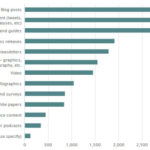In order to be effective, every piece of marketing your business puts out should contain a call to action (CTA)—an invitation for the consumer to follow up what they’ve just seen or read with a next step. The CTA varies according to the content, the campaign, and the delivery method. You might ask viewers to subscribe to your YouTube channel after watching a video, like you on Facebook after landing on your website, or call to schedule a free consultation after running an online demo.
Most marketers will automatically work on crafting a compelling call to action for an important marketing piece, such as brochures, websites, white papers, and newsletters. But what about the more “everyday” forms of content marketing? Articles, Facebook updates, blog posts, and even curated content should contain some form of the CTA—your key to effective conversions.
Are your calls to action working for you? Here are some tips to maximize the reach and conversion rates of your content marketing campaigns with clear, consistent calls to action.
Basic CTA Commandment: Find the Right Balance
Your call to action should be somewhere between weak or nonexistent and stridently demanding. Neither of these extremes will do your content marketing any favors.
Weak: Of course, not including a CTA at all is the weakest and most ineffective form. Another example of a weak call to action is the vague or non-specific directive, such as asking “What do you think?” at the end of a blog post, or labeling your subscription callout “Sign up here!” without saying what readers are signing up for.
Aggressive: This type of call to action is one that turns content readers off. One of the biggest offenders here is the pop-up style ads that fade the contents behind it. In most cases, readers can just click off the ads to make them disappear—but some content marketers set these up so there’s no way to navigate away from the pop-up until you enter your email address or click on the link.
It’s best to avoid both weak and aggressive calls to action in your content marketing, and all of your marketing in general.
Why Your Content Marketing Needs Calls to Action
 The point of content marketing is to gain more exposure for your company and build your brand, without looking like you’re going for the sale. Effective content marketing involves offering viewers something they can use—whether its entertainment, information, or valuable insider tips. Search engines reward content that is relevant, rather than salesy.
The point of content marketing is to gain more exposure for your company and build your brand, without looking like you’re going for the sale. Effective content marketing involves offering viewers something they can use—whether its entertainment, information, or valuable insider tips. Search engines reward content that is relevant, rather than salesy.
So, why should you include a call to action with your content marketing?
In this case, the CTA serves as a simple reminder that your company exists, and offers relevant answers to the questions posed by the content. You’re letting those who were interested enough to read the content that you can benefit them—and should they choose to take advantage; you’re giving them a way to find you and your business.
Writing a Strong Call to Action for Content Marketing
How do you find that perfect balance? These tips will help you write a strong content marketing CTA for any piece of content you share.
Decide on the Action Before You Write the Content. Each of your content marketing pieces should focus on a single end goal that will be reflected in your CTA. You may want viewers to like or share something on social media, sign up for a subscriber list, download an eBook, start a free trial, or schedule a consultation.
Whatever the goal, create the content with that goal in mind. That way, your call to action will tie in organically with what your audience has just read or viewed, and the CTA serves as a natural extension, rather than a choice to be made.
Consider Who is Likely to Read, and Why. Match your calls to action to the point in the sales cycle your readers are most likely to be. For instance, if you’ve written an article or blog post that introduces your company, you’ll attract people who are hearing about your brand for the first time. In this case, the CTA should direct them to where they can learn more—rather than try to sell one of your high-level products or services.
Keep it Short. In content marketing, short and sweet is far more effective. Long calls to action are skimmed at best, and more typically ignored. Use as few well-chosen words as possible, and include just one link directly to the place where your desired action can be taken—no more, and no less.
Make it Easy. Want readers to share your content on social media? Place your social media buttons with your call to action. Looking for subscribers to your lists? Code a subscription box in, rather than directing them to your sidebar or landing page. If they have to go hunting for it, they’re less likely to take the action.
Call to Action and Curated Content
Curated content—articles, posts, or videos that you didn’t create, but are sharing because they’re relevant to your target market’s interests—is a great way to supplement your content marketing strategy. Using curated content removes the pressure to constantly generate fresh content, and lets you spread goodwill by linking and sending traffic to other people’s content.
However, you can still benefit by adding a call to action to your curated content.
The best way to do this is usually to encourage discussion on the topic of the content by asking questions. “What do you think?” isn’t specific enough. However, if you share a link to a list-style article, you could ask readers, “What would you add to this list?” For articles or videos on controversial topics, you might ask, “Do you agree or disagree?”
Put Your CTAs to Work
Including calls to action with your content marketing is a simple, yet powerful way to boost the effectiveness of your campaigns and get your audience involved. Whether it’s a request to sign up for your mailing list, or a simple shortened link in a tweet directing viewers to your landing page, the content marketing CTA can help you increase traffic—and ultimately, conversions.
Do you include calls to action with your content marketing? What have you found to be the most effective? Share your tips in the comments!
Image courtesy of mickeyroo









Comments are closed.